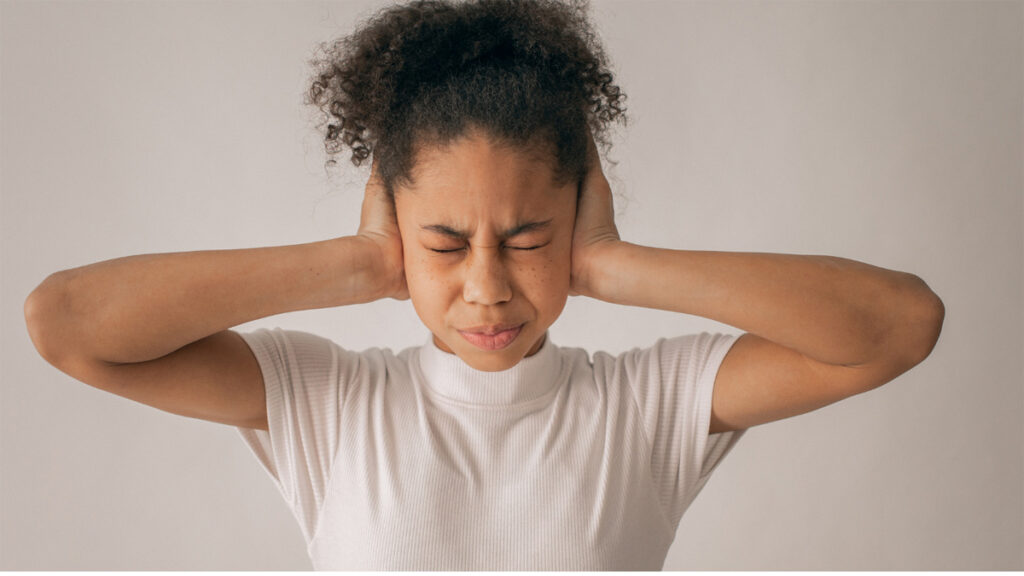The first step of a comprehensive hearing evaluation is an otoscopic examination. An otoscopic examination is completed with an otoscope which is a medical tool that provides light and magnification to view the integrity of the outer and middle ear. It is imperative that the medical practitioner assess the overall health of the ear before beginning audiometry to determine if there are any observable problems with the outer or middle ear.
What is an Otoscopic examination?
The purpose of an otoscopic examination is to assess the health of the external auditory canal (EAC) and the tympanic membrane also commonly called the eardrum. During an otoscopic inspection your health care professional is looking for a healthy tympanic membrane which should be pale and translucent. During otoscopy there should be what is called the cone of light reflecting off the surface of the eardrum. The cone of light can be used to orientate the doctor as the ear is observed. This light reflex occurs when you shine the light on the tympanic membrane causing a reflection to appear from a healthy eardrum. The absence of light can indicate possible middle ear problems.
During otoscopy
During otoscopy the practitioner will use an otoscope to inspect the ear canal while pulling up and back on the pinna to help straighten the ear canal which provides a clear visualization of the ear anatomy.
The provider should then slowly move the speculum into the canal until the tympanic membrane becomes visible. To evaluate the health of the tympanic membrane, the provider should observe factors such as color, presence of a perforation, and any scarring that may be present. After a thorough inspection of the tympanic membrane, the provider slowly removes the otoscope from the auditory canal while continuing to observe the auditory canal for evaluation of its health.
Perforation
A tympanic membrane perforation occurs when the tympanic membrane ruptures either due to trauma or disease and creates a hole in the thin tissue that separates the outer and middle ear. Tympanic membrane perforations are typically easily visible using an otoscope. A perforated tympanic membrane can result in hearing loss and can make the middle ear more susceptible to infections. Often tympanic membrane perforations resolve on their own however they can require medical/surgical intervention by an otolaryngologist.
Scarring
Tympanosclerosis is the medical term for scarring of the eardrum. Scarring occurs after the eardrum is injured or after surgery and can be seen during an otoscopic exam. It is common to see a small white scar after a person has had tubes in the middle ear. Scar tissue formation after ear infections may also be present and can cause eardrum dysfunction.
What to expect during a hearing test
An audiometric evaluation is a noninvasive hearing test that measures the quietest level you can hear certain frequencies. The frequency range that is typically tested (250 Hz to 8000 Hz) is important for speech understanding. This is completed one ear at a time and using an audiometer which is a specially calibrated machine used by a trained professional to test hearing. Another part of audiometry is testing your ability to distinguish speech in silence.
Audiometric Testing detects:
- If hearing loss is present and if the loss is mild, moderate, severe, or profound
- At which frequencies hearing loss occurred (low, middle, or high tones)
- If the loss is one-sided or on both sides
Tympanometry Testing detects:
- Fluid in the middle ear
- A middle ear infection (otitis media)
- Infection of the outer ear (otitis externa)
- Tympanic membrane perforation
- Eustachian tube problems
This test diagnoses middle ear problems. A flexible rubber tip is used to change the air pressure inside the ear to make the eardrum move back and forth.
Importance of Hearing Tests/Evaluations
Diagnose Hearing Loss
A hearing test is designed to test your ability to hear and diagnose any hearing loss that you are experiencing.
Keep Track of Changes in Your Hearing
Regular hearing tests are beneficial because they keep track of any changes to your hearing over time. With regular testing, the results can be compared to the results of your previous tests to determine if there have been any changes in your hearing sensitivity.
Check Overall Ear Health
During an audiological exam, the practitioner will also look at the overall health of your ears. Problems such cerumen build up, infections, fluid, or any injuries to the ear.
Improve Quality of Life
If testing reveals hearing loss, patients can begin to treat the problem. Hearing aids can improve the quality of life of people who have hearing loss, ensuring they can still participate in everyday activities. A hearing test can also help you to find the right treatments for tinnitus or other hearing problems that you might be experiencing.
Detect Other Medical Problems
A hearing test is also an opportunity to detect other health problems that might affect the hearing such as an ear infection or wax build up. Getting a hearing test can be the first step to addressing these problems.
Prevent Other Health Issues
When you leave hearing loss untreated, it can lead to other health problems, including depression, anxiety, balance issues, and cognitive decline. Early intervention helps the brain adapt to amplification making hearing aids more successful for the patient.
Otoscopy is a key part of the audiological exam. It allows the practitioner to see the tympanic membrane and the overall health of the outer and middle ear.

